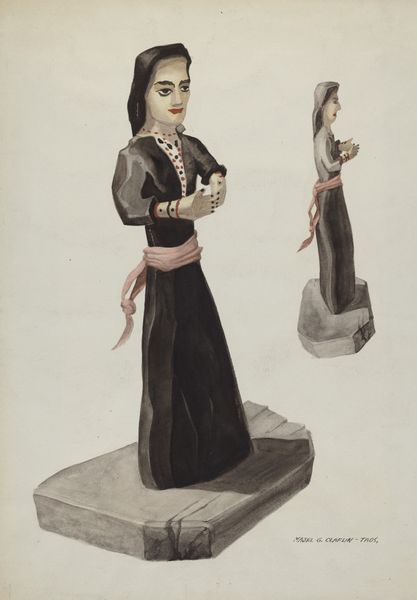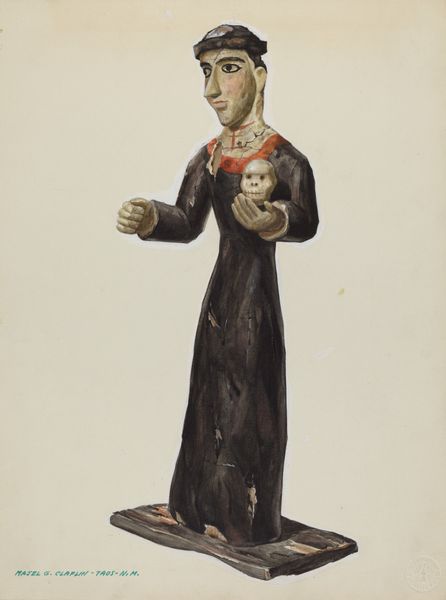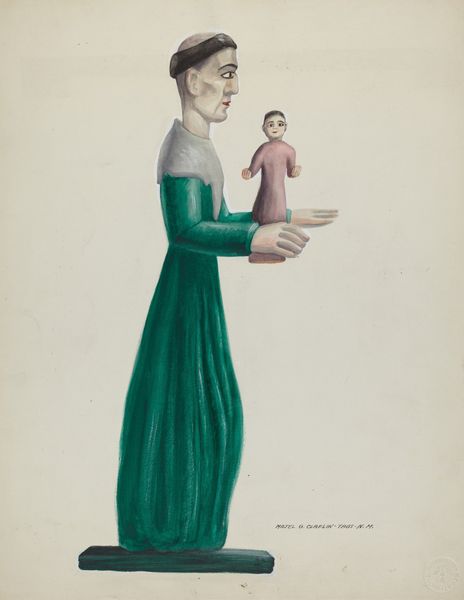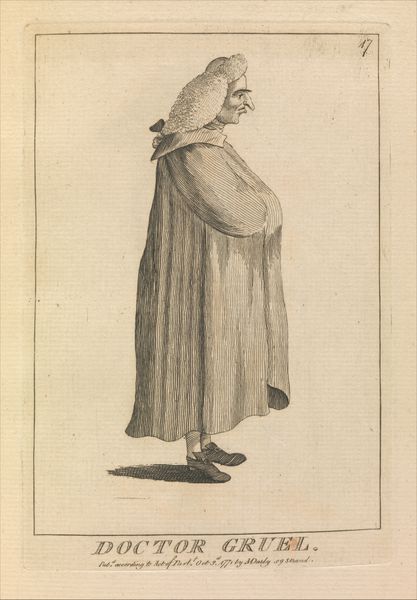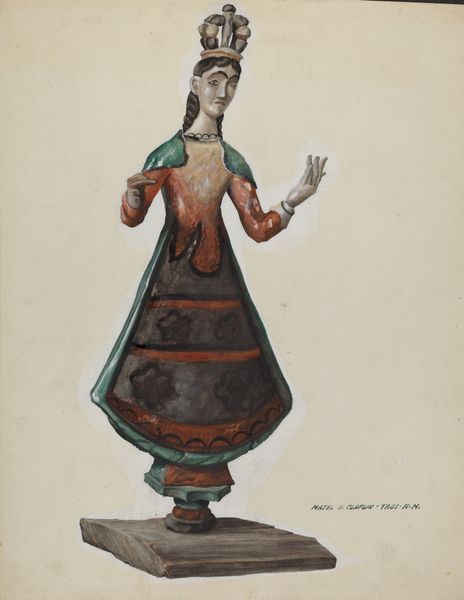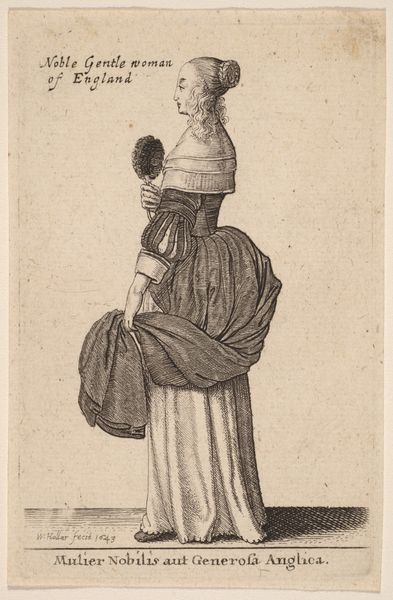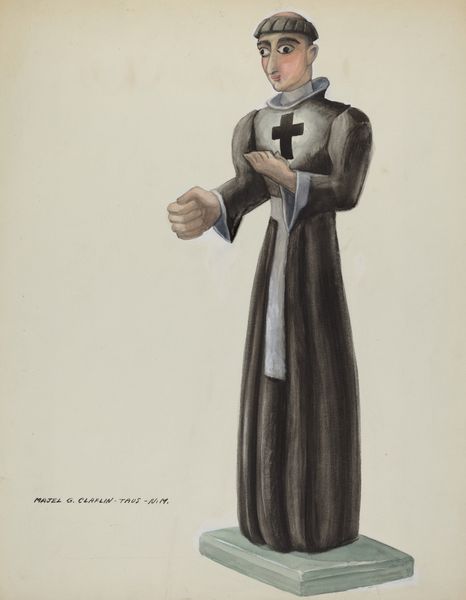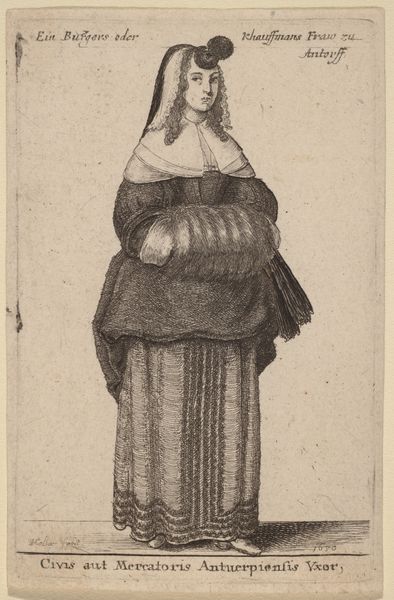
painting, watercolor, sculpture, wood
#
portrait
#
painting
#
indigenism
#
watercolor
#
folk-art
#
sculpture
#
wood
Dimensions: overall: 36.5 x 29 cm (14 3/8 x 11 7/16 in.) Original IAD Object: Approximately 13"high
Copyright: National Gallery of Art: CC0 1.0
Curator: This intriguing piece is titled "Carved and Painted Santo - Santa Rita," a work crafted between 1935 and 1942 by Majel G. Claflin. It appears to blend watercolor painting with elements of folk-art sculpture, specifically wood carving. Editor: It’s striking how the artist marries this folk-art aesthetic with a modern sensibility. There's a sense of stark simplicity, almost minimalist, despite depicting a religious figure. Curator: Precisely. The portrayal of Santa Rita speaks to broader conversations surrounding representation and cultural identity during that era. We can see a reflection of indigenist movements and a search for authentic cultural expression. The work intersects with discussions around religious iconography within marginalized communities. Editor: That small orb in her hands—I wonder if it’s meant to represent the world or perhaps a symbolic offering? Santa Rita herself often intercedes on impossible causes. Maybe this orb is the impossible dream, carefully cradled. Curator: It could also allude to the power structures within religious institutions and how that power relates to those who are vulnerable or dispossessed. Notice her expression, there is this determined resignation to it, which opens avenues for interpretations concerning gendered roles within religion. Editor: The lines of her garment remind me of streams converging, while the plainness of the design emphasizes the core humanity. How she stares, too-- almost past the sphere. There is a haunting expression, all the deeper because her other characteristics are minimized, down to just basic elements of wood and water-based paint. It also draws focus onto that carefully positioned object. Curator: Right, that element of performance. There are considerations for class and access to representation. The limitations placed on certain communities that shaped artistic expression, using locally available materials like wood and watercolors. It compels viewers to confront broader inequities, class issues, and their effects. Editor: Thank you for putting that into context. Curator: And thank you for spotting the crucial role that imagery and emotion can bring when experiencing folk-art. It invites us to really feel.
Comments
No comments
Be the first to comment and join the conversation on the ultimate creative platform.
